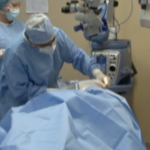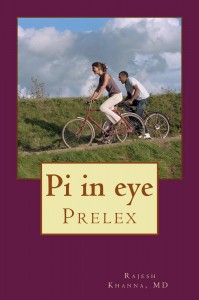Author: prelexbook_k271nt
Improve golf with better vision
Working out after cataract surgery.
A common question after Cataract eye surgery is what can I do and not do. One thing you don’t want to do after is go straight to the gym. It is important not to strain the eyes after surgery because they are in a recovery process. Lifting weights or doing some form of strenuous activity may cause pressure in the eyes and this may lead to stress on the eyes in a time when it needs rest. More importantly the surgeon has made an incision on the cornea and although it does start healing immediately it is still sensitive and needs to not be strained.
A lot of people like jeweler from ventura or a businessman from valencia have gone back to work on the same day. But physicians, nurses and paramedical professionals need to wait a few days to avoid bugs.
Laser blade free cataract surgery does make it safer.
[contact-form][contact-field label=’Name’ type=’name’ required=’1’/][contact-field label=’Email’ type=’email’ required=’1’/][contact-field label=’Website’ type=’url’/][contact-field label=’Comment’ type=’textarea’ required=’1’/][/contact-form]
Lasers help bring cataract surgery in focus
Exclusive to the Acorn group of newspapers
There are a number of advantages to using the laser in cataract surgery. Mainly, the surgeon can plan the exact size of the eye capsule opening that is needed for the replacement lens. With lasers, the doctor can also determine the exact pattern in which the old lens will be broken up.
Tests prior to the procedure include obtaining a colored image of the surface of the eye and measuring the length of the eye.
A detailed clinical slit exam is required to assess the thickness, color and hardness of the problem lens. Any weakness in the support of the lens or abnormalities on the lens capsule must be spotted.
This information leads to a plan of action which is entered into the laser software. Modifications can be programmed and, in difficult cases, a second opinion can be obtained.
Laser cataract surgeryis safe as it does not stress the lens capsule or its support. The same holds true in traumatic cataract cases where trauma weakens the support.
Use of the laser is beneficial in making openings in eyes with thick capsules such as those of children.
In people with white or red cataracts, the capsule needs to be stained manually to be visualized, and still it may be difficult to get a good view of the area. The laser overcomes this challenge as it employs imaging in real time and vertical cutting to avoid any traction on the zonular support system.
Acorn laser cataract surgery information
The opening in the capsule can be controlled by the laser down to a tenth of a millimeter. The laser consistently generates an opening of the desired diameter and a shape that is difficult to reproduce manually. An experienced laser surgeon will make a fully accurate opening. Sometimes the shape may be eccentric or oval.
A more circular, central and precise opening is best when implanting an artificial lens. When using the Restor and Tecnis brands, the openings are usually a tad smaller than for Crystalens.
Laser surgery for cataracts is equally helpful in wound management. A precise opening will allow entry and exit of instruments and insertion of the implant without undue stress on the wound. This prevents wound leakage at the end of the procedure and therefore faster healing.
Splitting of the lens by laser is done without any stress on the capsular bag or the zonular support system. Energy from the laser is delivered from the bottom towards the top, which allows gas generated by conversion of the lens material into plasma to escape, as well as allow the subsequent beam to work without interference from gas bubbles.
Sound energy, a commonly used procedure, can cause inflammation and affect the functioning of the cornea.
In dense cataracts, the bottom is difficult to perceive so the capsule can be accidentally ruptured. Real-time display with the ability to be precise and avoid the bottom of the bag becomes an advantage when using the laser for cataract procedures. Breaking apart a hard, afflicted lens can be time-consuming with traditional sound wave technology. Lasers decrease the time and energy required to accomplish the same task.
Further progress in laser technology is coming. One day maybe even robots will be able to do safe and effective cataract surgeries. For now, we must still rely upon the skilled hands of human surgeons.
For more information about laser cataract surgery, visit www.piineye.com or contact the Khanna Institute at (805) 230-2126.
Pain free and easy cataract surgery with “Pi in eye”
Cataract Surgery is one of the safest procedures performed today and is be pain free! Read all about this cataract surgery with “Pi in eye”
“With Dr. Rajesh Khanna there was no pain during my Cataract surgery” said Susie of Beverly Hills. Dr. Khanna of the Khanna Vision Institute is highly trained in Cataract surgeon and has completed thousands of surgeries for over two decades. He knows the fear of Cataract eye surgery and will make sure all you fears are washed away the moment you come in for surgery. There is no pain during Cataract surgery, although you may feel some slight pressure on the eye. During the surgical procedure Dr. Rajesh Khanna will administer tropical anesthetic drops into the eyes. These drops will numb the eye allowing you to relax during the procedure. Dr. Khanna and his technician will walk you through the surgery as it is being done. They will calm your fears and before you know it you will have the gift if sight. The Cataract procedure will only take around 30 minutes to complete. After the numbing drops wear off you will be given post op instructions with drops to administer in your eyes for the next two weeks. During this time there will still be no pain but you might feel a slight sensation of a foreign object in the eye. The drops will help you will this irritation by keeping the eyes moist. It is most important not to rub the eyes after the Cataract procedure. This is important for the healing process and to make sure there are no complications. Cataract eye surgery is one of the safest surgeries today. You will be in and out of the office in no time and can finally feel the blessing of clear eyesight. You will be astonished at how easy the whole process is and now you can do things you could not do before.
Predisposing factors for Dry Eye
|
Aging: As we revolve around the yellow sun we seem to loose all our strength and powers. Maybe if we were on krypton we would become stronger. On earth, every year production of fluids decrease. so we have aching joints and drier eyes |
|
Menopause : Need we say more? Hormones decrease affecting the functioning of the tear glands |
|
Allergy Response |
|
Environmental Stresses |
|
Contact Lens Wear: Is it sane to put foreign bodies in your eyes? |
|
Wind and Air Pollution: The megapolis with remnants of the industrial revolution, and craze for cars. |
|
Sunlight |
|
Ocular Surgery such as LASIK or Corneal Transplant. They transect the corneal nerves affecting reflex tear pathways. |
|
Medications / Topical Medications |
|
Preservatives in Artificial Tears |
|
Systemic Medicines- Antihypertensive, Antiandrogen, Anticholinergic, Antidepressant, Cardiac Antiarrhythmic drugs, Anti Parkinson’s disease agents, Antihistamines |
Figure 11.2 Dry Eye Disease: Predisposing Factors
Tears Definition of dry eyes
It is a mismatch between tear production and drainage. Either the drainage is excessive or the production is deficient. Usually the blame lies on inadequate production.
Tears are composed of three components – Lipid or oils, Aqueous or water and Mucin. Oil normally floats on water. Mucin layer helps keep the oily layer mixed with watery layer. There are also minerals, lysozymes and antibodies. Minerals are important for the nutrition of the cornea. Lysozymes and antibodies are the natural defense mechanism. The proportion and interaction of these three components is as important as the total volume.
Each layer of tear is produced by a different part of the eye. The water is secreted by the main lacrimal and accessory lacrimal glands. The former is located behind the outer part of the upper lid. The helper lacrimal glands are smaller and are in the lids. The meibomian glands produce the oily layer. They are present near the root of eyelashes and they pour their oil out from openings just behind the eye lashes. Numerous small goblet cells are embedded on the membrane lining the inner surface of the lids adding to the tear film.
The tears are spread across the front surface of the eye by the blinking action of the lids. The eyelids blink around 16 times per minute. The upper lid acts as a windshield wiper. With each blink it mixes the tears and coats the cornea with this thin protective layer. In a few seconds this film breaks up, to be restored with the next blink.
Glaucoma express shunt
Some news on the glaucoma front. As you may be aware glaucoma is the term given to high intraocular pres damaging the optic nerve and affecting the visual field. MIGS or micro incision glaucoma surgery is the 21st century answer to increased pressure in the eye.
Before the advent of this express micro shunt we had big shunts like molteno or ahmed shunts. They were big and cumbersome. To insert them required big eye surgery. A lot of side effects were observed.
The modern implant has fewer side effects and therefore more user friendly.
Causes of Dry Eye
Causes of dry eyes:
Let us consider an example of a wash basin, where we want an optimum level of water to be always present so we can float a paper
boat. The tap produces water at a predetermined rate and a drain stopper regulates the exit of water from the basin. Under these conditions our paper boat can float around. The level of water will decrease if the tap does not produce enough water. If the room is dry, hot or windy the water will vaporize. Finally, if the drain stopper leaks water, the boat will sink. Decreased tear production due to ageing, infection or inflammation is akin to an improperly functioning tap. Increased evaporation may account for decreased tear lake leading to irritated eyes. Rarely the outflow channels, the punctum, may be too big.
Decreased Production:
- 1. Atrophy of tear producing cells.
- 2. Inflammation
- 3. Suppression by drugs
- 4. Congenital absence
- 5. Tumors
- 6. Surgical excision of tear producing glands
Increased Evaporation
- 1. Air Conditioning
- 2. Heat in cold climate
- 3. Outdoor exposure to sun
- 4. Infrequent blinking
Increased drainage
If the tear punctum is too big or duplicated.
Poor Blinking
- 1. Habitual
- 2. Lid tumors
- 3. Nerve damage
Incorrect Composition
The volume is god but there is a mismatch between the oily and water layers.

